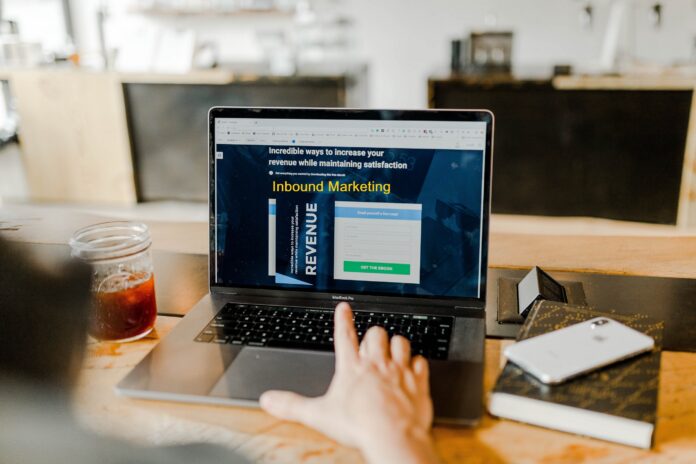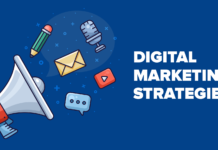Remember all those business plans you made for 2020, as well as the tactics you painstakingly devised to drive your company to new heights of sales and marketing success? That was before mass incarceration, record unemployment, a zigzagging stock market, a stumbling economy, and millions of people living in social isolation. This article provides useful and actionable inbound marketing techniques for B2B businesses that you can easily incorporate into your best inbound marketing tactics. The pandemic wreaked havoc on every sector, forcing marketers to pivot quickly. So, how do you prepare for the year 2021? What lessons did you take away from this experience, and where do you concentrate your efforts going forward?
In 2021, one of the most critical aspects the company should be monitoring conversion efficiency monthly based on data-driven decisions is a successful inbound marketing strategy. A good inbound marketing strategy, would deliver more positive inbound marketing results with a higher ROI than conventional outbound marketing. Marketing to companies differs significantly from marketing to individuals. That is why there is a completely different marketing approach — B2B marketing — and why we created this guide. You’ll have a clearer understanding of B2B marketing, the most successful B2B marketing tactics, and how to meet and convert your business audience by the end of this post.
Outbound vs. Inbound Marketing: What’s the Difference?
Inbound marketing tactics and ideas for B2B marketing revolve around a flexible and repeatable playbook for using inbound marketing best practises to draw ideal buyers to your website, turn website traffic into leads, and cultivate those leads into customers. Although some companies continue to have success with b2b outbound marketing strategies, the ROI on inbound marketing continues to decline. However, it has not yet sunk far enough for anyone to abandon old-fashioned approaches such as tv advertisements and cold calling. Nonetheless, savvy B2B marketers are focusing more on inbound marketing and allocating more money to it than outbound marketing. When you describe inbound marketing, you’re referring to a strategy of attracting and leading consumers to you rather than going out and broadcasting your message in the hopes of capturing their attention.
The goal of inbound marketing is to identify customers who are already looking for what your company has to offer and place your content so that it is easy to find. Inbound marketing assists in the discovery of an issue and the introduction of the product or service as a solution. Even if you’ve already implemented an inbound marketing strategy for your B2B company, it’s a good idea to keep up with the latest research and developments to ensure that your approach is as successful as possible and that it’s continually tailored to meet your ROI objectives.
Tactic 1:
Email Marketing for B2B Inbound Marketing
Email marketing is a tried-and-true way of reaching out to both individuals and businesses. Did you know that email is used by 93% of B2B marketers? Is it possible that you’re one of them? You need to be. Emails encourage interaction, which converts subscribers to leads… and then customers. Email marketing is also an effective means of disseminating the company’s content. Email newsletters are used by 83 percent of B2B organizations as part of their content marketing strategy, and 40 percent of B2B marketers believe these newsletters are the most important factor in their content marketing performance.
Tactic 2:
Digital Marketing for B2B Inbound Marketing
Any business, whether B2B or B2C, should have a digital presence, which includes paid advertising, SEO, a website, and any other online locations where your B2B company is involved. Let’s go through a few strategies that can help you improve your B2B digital marketing strategy. Defining your target group, or customer persona, is the first step in creating an effective B2B digital marketing strategy. After that, almost every other marketing effort will be driven by this demographic and psychographic data, ensuring that the content and digital materials are seen and heard by the right people (and that no resources go to waste on your end).
Tactic 3:
B2B Content Marketing
We’ve discussed how B2B customers are motivated by experience, logic, and a willingness to learn. What better marketing strategy than B2B content marketing to meet these objectives? Since the B2B buyer’s journey differs from the B2C buyer’s journey (which involves shorter sales cycles and fewer decision makers), the content you build for your B2B content marketing campaign may differ from what you’ve seen as a user.
Tactic 4:
B2B Social Media Marketing
Many B2B businesses struggle with social media marketing. It can be more difficult to communicate with business customers through social media, particularly because (as previously mentioned) there is usually a longer sales cycle and chain of command. To be honest, B2B social media marketing may not be where you convert the most leads, but that’s fine. It is most often used at the start of your customers’ purchasing journeys. When it comes to marketing and engaging with potential customers, social media is a powerful tool for creating brand recognition, giving your company an online identity, and humanizing your business. Social networking, like email marketing, is a highly successful medium for sharing your content and improving your brand expertise, all of which B2B customers trust.
Tactic 5:
The Majority of B2B Businesses Have a Strategy in Place.
When it comes to B2B companies, 76% say they have a formal marketing plan that helps them shape and direct their marketing efforts. However, nearly a quarter (24%) of respondents also do not have a structured plan in place. As a consequence, opportunities may be overlooked and marketing activities may be disjointed. Most B2B companies (56 percent) use a mix of in-house and outsourced expertise to deliver their marketing strategies, enabling them to utilize others’ expertise while investing in external resources as required. Currently, 38% of marketers rely entirely on in-house resources to carry out their marketing campaigns, which is nice if they have the resources, but it may mean they are overstretching their teams or relying on inexperienced staff.
Finally, consider how you generate leads and make sure your objectives represent this. You can develop a documented marketing strategy based on past and current results using data and these benchmarks.


















